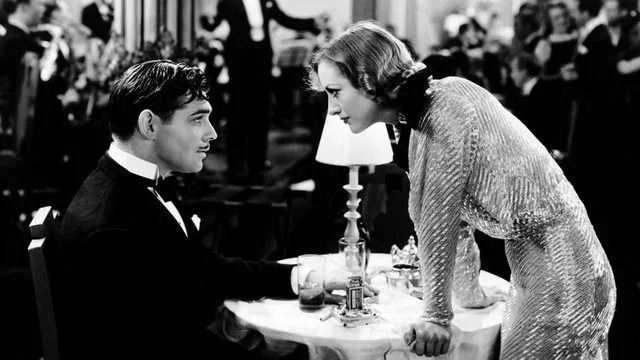 |
| Joan Crawford and Lon Chaney in The Unknown |
Cast: Lon Chaney, Joan Crawford, Norman Kerry, Nick De Ruiz, John George, Frank Lanning. Screenplay: Tod Browning, Waldemar Young, based on a novel by Mary Roberts Rinehart; titles: Joseph Farnham. Cinematography: Merritt B. Gerstad. Art direction: Richard Day, Cedric Gibbons. Film editing: Harry Reynolds, Errol Taggart.
One of the kinkier movies in the Lon Chaney filmography, The Unknown betrays its pre-Code nature very early. It's set in a circus where we see women in the audience ogling a performance by the strong man, Malabar (Norman Kerry). But the mother of one of the oglers, sitting across the aisle, hisses at her son to "go home and take off that dress." Chaney plays Alonzo, whose knife-throwing act involves his lovely assistant, Nanon (Joan Crawford), the daughter of the money-grubbing Zanzi (Nick De Ruiz), owner of the circus. What makes Nanon's job more perilous is that Alonzo throws the knives with his feet, being armless. Eventually Alonzo's attraction to Nanon will involve murder, dismemberment, and a love triangle in which Alonzo almost tears his rival, Malabar, to pieces. Chaney's gift for physical transformation reaches a new peak in the movie, which requires him to do everything from throwing knives to drinking from a teacup with his toes. In fact, although Chaney learned to do many of these things, some of the actions were performed by his body double, Paul Desmuke, who was in fact armless. Careful camera manipulation kept Chaney's upper body in the frame as Desmuke actually lit cigarettes and threw knives with his feet. The Unknown was one of Crawford's earliest featured performances, in a role that MGM originally wanted Greta Garbo to play. She's still a little raw as an actress, but her presence outshines that of her leading man, Kerry, whose career fizzled as hers ignited. The Unknown, one of eight movies director Tod Browning made with Chaney, lacks the sympathy for the physically divergent of Browning's most notorious film, Freaks (1932), although Alonzo's dwarf assistant, Cojo (John George), sometimes serves as the moral corrective to Alonzo's schemes.
















































